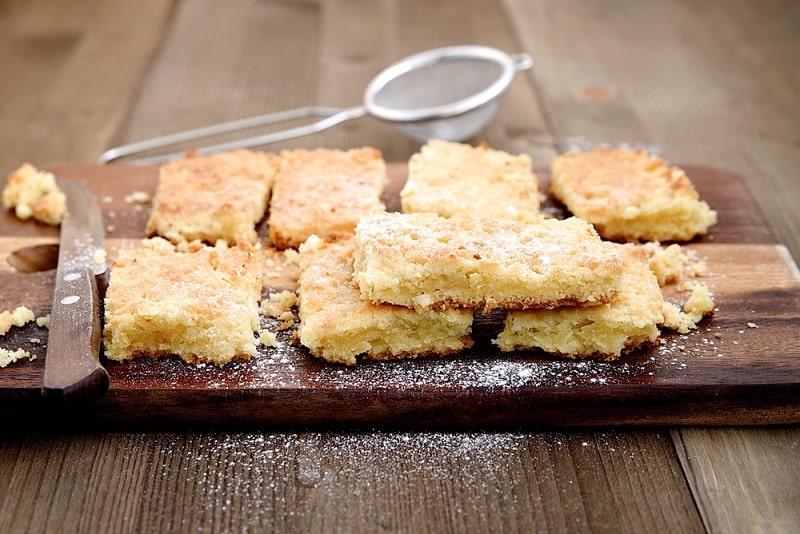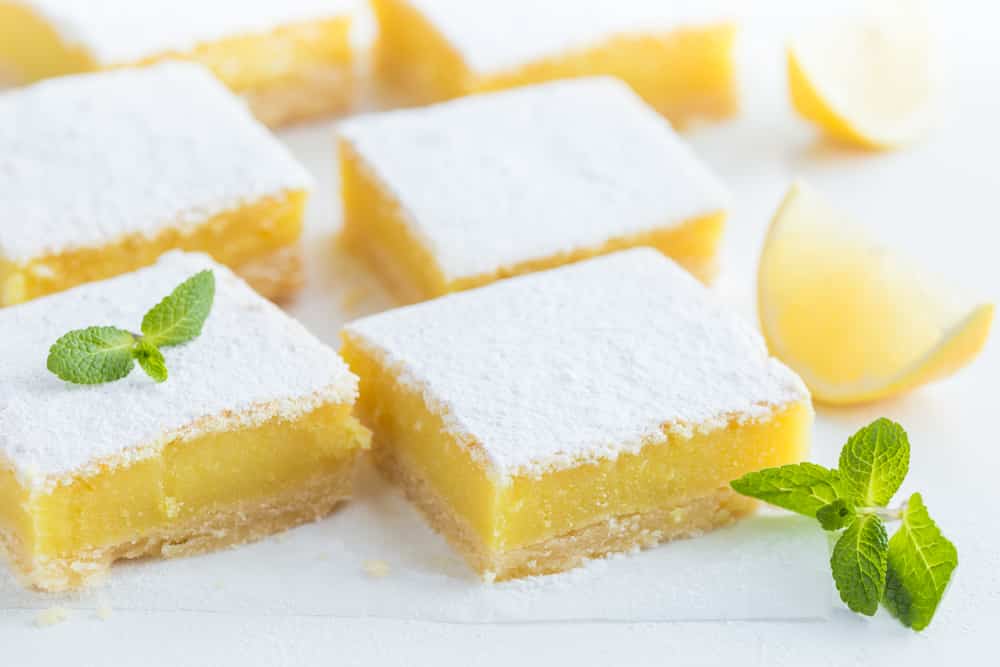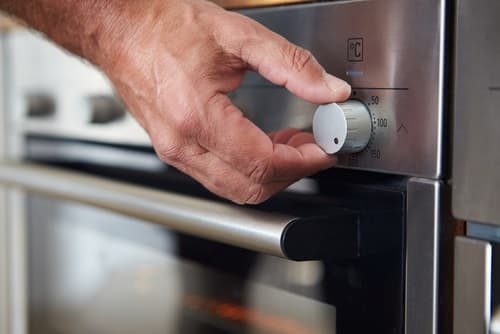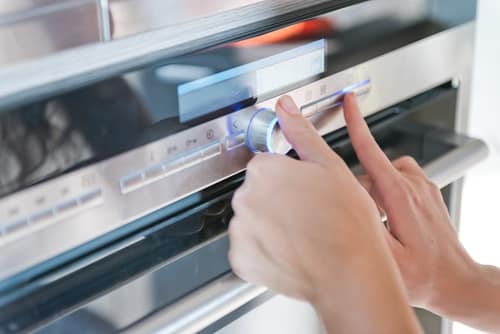
There are not many dishes that have a combination of sweet and tangy the way lemon bars do.
They’re small, perfect for taking to picnics or a friend’s house as dessert. Put them in a nice tin with a ribbon, and they can even make a special homemade gift.
They are composed of a sweet shortbread crust with a lemon filling on top and a thick layer of sugar sprinkled over.
The shortbread crust gives the bars a buttery consistency, while the filling is creamy and melts in your mouth.

Lemon bars are notoriously difficult to make since they can easily be overcooked or undercooked. In the case of undercooked lemon bars, you can easily put them for some more time to bake.
Unfortunately, the only remedy for overcooked lemon bars is to start again from scratch and make sure to take the next batch out of the oven sooner.
What’s in Them?
The standard ingredients for lemon bars have flour, butter, vanilla, salt, and sugar in the crust. The filling is usually made with eggs, fresh lemon juice, sugar, flour, and a sprinkling of salt.
The star of the dish, lemon, is a great source of vitamin C. Lemon is also proven to lower cholesterol, prevent kidney stones, protect against anemia, reduce cancer risk, and increase digestive health.
Lemon is also great at helping with weight loss, although the sugar in these bars means they aren’t recommended if you’re on a diet!
How to Get the Perfect Consistency
The shortbread is made by simply mixing the flour, salt, vanilla, sugar, and butter until there are no lumps.
Remember that it’s important the butter is melted before being added. The filling is where it gets a bit trickier. It’s best to mix the flour and sugar first, then add other ingredients.
The flour must have no lumps, so if you live in an area with a humid climate or your flour wasn’t stored in an airtight container, sift the flour into the sugar.
Next, you can add your other ingredients, being careful not to over mix the filling.
Once the filling is done, you’re ready to pour it over the base and bake the bars for around 20 minutes, depending on your recipe.
Common Mistakes
This is where people usually go wrong; they leave the lemon bars in the oven for too long. Leaving them in for too long can cause the filling to curdle.

The presence of the acidic lemon makes the egg in the filling curdle even more easily than it usually would. This will result in a scrambled egg-like mess, destroying both the appearance and texture of the bars.
It requires a lot of concentration and often a few failed attempts to cook the lemon bars perfectly. There is an approximately 50°F window that the filling of the lemon bars needs to be in.
If they don’t hit this temperature window, the bars won’t set, leaving you with a runny and watery filling. If the bars go past this window, the bars will curdle.
This will leave the filling with a lumpy consistency, and the bars will also be slightly runny as the liquid in the filling separates and seeps out.
This results in a soggy crust and an unappetizing dish. Below are two ways to make sure this never happens.
Techniques Used To Avoid Overcooked Lemon Bars
1. Temperature range
This means that the lemon bars need to be cooked at a precise temperature. With lemon bars being so easy to curdle, it is best to keep the oven temperature at 203°F.
Higher heat can cause the filling to curdle before it cooks through or leave you with a burnt crust. Cook the bars for around 25 to 30 minutes and inspect them regularly.
If the filling is too runny, give the dish more time to cook. Look out for golden edges and a center that is slightly wobbly but not runny. This indicates that the bars are cooked to perfection.

Each oven is different, but if you cook the bars at this temperature, you ensure that you will cook them through without curdling the filling, even if your oven is slightly hotter than the dial indicates.
2. Cooking time
Another problem with lemon bars is being cooked for too long. People often make a dish and then leave it to bake while they get busy with something else.
It’s an easy mistake to make, but it’s important to set a timer before the designated cooking time. The bars cook for 25 to 30 minutes, so set a timer for around 20.
After this, you want to watch the bars constantly, as even a few extra minutes can result in a curdled filling.

Lastly, enjoy your dish! The purpose of baking is to make something delicious for everyone, and lemon bars are no exception. They make a fine addition to picnics, teas, and dessert.
If you cook them just right, everyone will be lining up to ask you for your recipe.